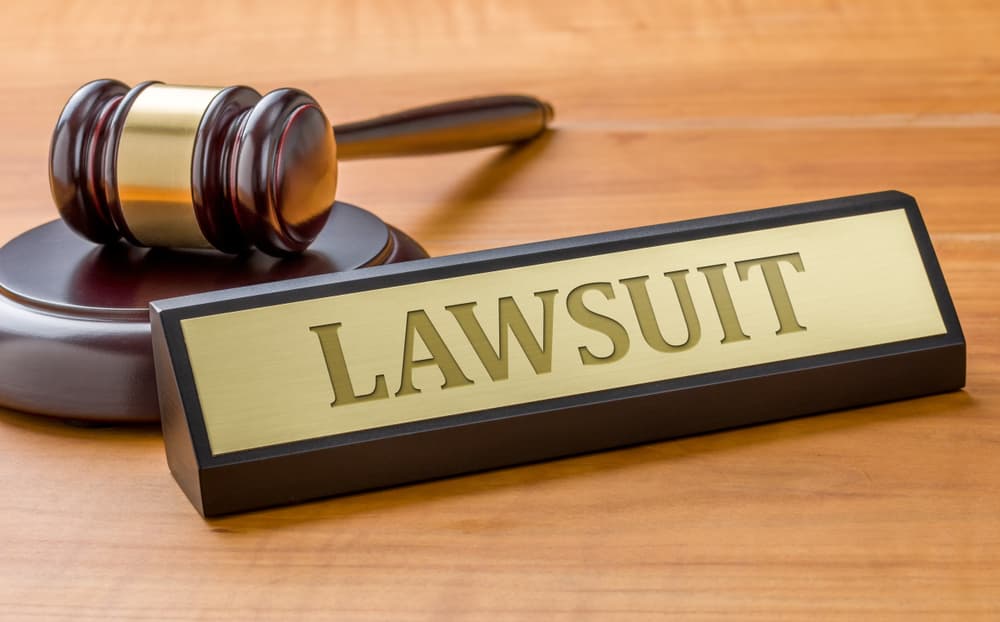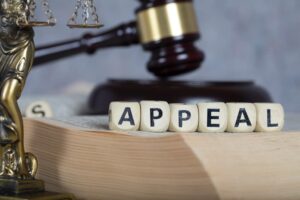How Does a Personal Injury Lawsuit Work?

After someone else’s carelessness or wrongdoing injures you, you may wonder about filing a personal injury lawsuit. A personal injury case allows you to seek compensation for your injuries, medical bills, lost wages, pain and suffering, and more.
The legal process can seem confusing. But this step-by-step guide from a personal injury lawyer will explain how a typical personal injury lawsuit works from start to finish.
Getting Started
 The first step is to hire an experienced personal injury lawyer. Your lawyer will evaluate your case, gather evidence, deal with the insurance companies, calculate your damages, and represent you throughout the legal process.
The first step is to hire an experienced personal injury lawyer. Your lawyer will evaluate your case, gather evidence, deal with the insurance companies, calculate your damages, and represent you throughout the legal process.
To get started, your lawyer will have you provide details about:
- The accident
- Your injuries
- Medical treatment
- Lost wages
- Other damages
They’ll likely advise you not to provide any formal statements to insurance companies without their approval.
Your lawyer will then investigate. They will do this by requesting police reports, witness statements, camera footage, accident scene pictures, medical records, and other evidence. They’ll work to establish negligence and liability on the part of the other party.
Demand Letter
If your lawyer determines you have a valid case, they will send a demand letter to the person or company who caused your injuries. This formal letter outlines everything that happened in the incident. It describes the specifics of how the other party was negligent and directly caused your injuries.
The demand letter explains each injury you suffered, how severe they are, the medical treatment you’ve received so far, and the prognosis for any future treatment needs. It provides details about all the damages you’ve had. This includes current medical bills, lost wages, and other losses from the accident.
Your lawyer will calculate a sum that covers your economic damages. It will also cover compensation for non-economic damages like pain and suffering and emotional distress. It will also cover reduced quality of life and any permanent disabilities or disfigurements caused by your injuries.
The demand letter requests this calculated dollar amount as financial compensation to make you whole again after the accident. The demand package includes all the evidence from the investigation stage. This evidence includes medical records,
bills, wage statements, and proof of who is liable. It all supports your claims.
The person or company that receives the demand can review it. They can also review the supporting documentation. The documents outline their negligence and the damages their actions caused you.
They may choose to simply accept the demand for compensation and send a settlement check for the requested amount. Or, they may decide to deny the demand, refusing to accept any liability or pay any compensation whatsoever. It’s also common for them to counteroffer with a lower amount than what was demanded in an effort to negotiate a compromise settlement.
If the demand is accepted and paid, your case is resolved, and you will receive the compensation you’re owed. There’s no settlement if it’s denied outright or the counteroffer is unreasonably low.
At this point, your personal injury lawyer will likely advise that the next step is filing a civil lawsuit. You will take your case to court to get fairly compensated for all your injuries and damages.
The demand letter was an attempt to resolve the matter fairly without litigation. However, preparing a lawsuit becomes necessary if the other side is unwilling to settle properly.
Filing a Lawsuit
When settlement negotiations break down after the demand letter stage, your personal injury lawyer will move forward with filing a lawsuit in civil court. This starts the legal process to seek compensation through the court, not a settlement.
To start the lawsuit, your lawyer will draft a comprehensive legal document called the complaint. The complaint is the main pleading that lays out your entire case against the defendant. It describes in detail the specific incident or accident that caused your injuries, outlining all the key facts.
The complaint alleges exactly how the defendant acted negligently, whether through careless actions, inactions, or other wrongdoing. It explains the legal theories and grounds that establish the defendant’s liability for your injuries. The complaint also describes the nature and extent of the injuries you sustained, as well as their current and future effects on your life.
Most importantly, the complaint specifies the monetary damages you seek to recover from the defendant. This includes your past medical costs and future ones.
It covers income you lost from missed work and the money you might lose in the future. It also covers your pain, suffering, emotional distress, disability, disfigurement, and reduced quality of life.
The total amount demanded should include all of your economic and non-economic damages resulting from the defendant’s negligence.
After the complaint is written and filed in the correct civil court, the defendant must be formally served. They get a copy of the complaint and a legal summons.
The summons is an official court order commanding the defendant to respond to the allegations and appear before the court. At this point, the defendant must take the lawsuit seriously and have their lawyer respond.
The defendant’s lawyer will draft and file an official legal answer to the complaint, admitting or denying each allegation made against their client. Most answers deny all allegations of negligence and liability, asserting the defendant did nothing wrong.
The answer may also issue counterclaims against you or make other legal defenses. This begins the adversarial court process. Each side states their side of the case and prepares for further hearings and potentially a trial.
Discovery
Once the initial complaint and answer have been filed in a personal injury lawsuit, the next major phase is the discovery process. Discovery refers to the procedures set by the court rules. They let each side gather and share evidence from the opposition. The discovery phase is, in many ways, like a pretrial mini-investigation. Both parties have the opportunity to build their strongest possible cases with all relevant facts and information.
One of the most common discovery tools is what’s known as interrogatories. One side serves these written questions on the other, which must be answered fully and under oath, with harsh penalties for failing to respond truthfully and completely.
Your lawyer may send the defendant dozens of interrogatories. They will probe all aspects of the incident, their actions, your injuries and damages, their potential defenses, and more. You’ll have to provide sworn answers as well when interrogatories are served on you.
Another vital discovery procedure is requests for the production of documents. Both sides can formally demand the other party to provide any documents, records, photos, reports, correspondence, or other physical evidence related to the case.
This could include your medical files, employment records, repair bills, and other papers establishing negligence and damages. The defendant may have to turn over incident reports, inspection data, employee records, policies and procedures, and anything else bearing on liability and degrees of fault.
Among the most important discovery tools are depositions. In depositions, key individuals give live sworn testimony outside of court.
You can be deposed by the defendant’s lawyers. They will ask incredibly detailed questions about every aspect of the accident, your injuries, your damages, your personal life, and more.
This sworn testimony is recorded by a court reporter and can be used at trial. Your lawyer will also depose the defendant, their representatives, hired experts, and any eyewitnesses. Depositions require thorough preparation as the testimony could make or break your case.
Discovery inevitably involves large volumes of documents, evidence, and information flowing back and forth between the parties over the course of many months. Each interrogatory answer, file produced, and deposition taken gets analyzed by the opposing side’s lawyers, looking for new angles to substantiate their case or poke holes in the other side’s arguments.
It’s an exhaustive and often contentious process of mining every shred of information and evidence to strengthen one’s position before trial. Your personal injury attorney will advise you every step of the way on meeting all discovery demands and requirements.
Settlement Negotiations
Most personal injury cases are resolved through private settlement negotiations and never go to trial.
Your lawyer will advise you on reasonable settlement amounts based on:
- The strength of the liability evidence
- The severity and permanency of your injuries
- Current and future medical costs
- Lost wages and diminished earning capacity
- Pain, suffering, and reduced quality of life
If a settlement cannot be reached that properly compensates your damages, your case will proceed to trial.
The Trial
At a personal injury trial, both sides will present evidence and legal arguments before a judge and jury. The injured plaintiff carries the burden of proof to show negligence, causation, and damages.
Your lawyer will make an opening statement to outline the case. They’ll then question you and any other witnesses about how the defendant’s negligence caused your injuries. Experts may testify about the extent of your injuries, medical treatment needs, and other damages.
The defense will have an opportunity to cross-examine and poke holes in the evidence. The defendant’s lawyers will also present their own evidence and witnesses disputing liability and damages.
After both sides have rested, closing arguments are made summarizing the claims. The jury is then given legal instructions on evaluating negligence and liability, awarding damages, and reaching a verdict.
If a verdict assigns liability to the defendant, the jury will determine how much money should be awarded for your economic damages (medical bills, lost wages) as well as non-economic damages (pain/suffering).
Appeals
 When a personal injury case goes all the way through a trial and reaches a verdict, it does not necessarily mean the legal process is fully completed. Either side can decide to invoke their right to an appeal if they believe there were significant legal errors that unfairly impacted the outcome of the trial.
When a personal injury case goes all the way through a trial and reaches a verdict, it does not necessarily mean the legal process is fully completed. Either side can decide to invoke their right to an appeal if they believe there were significant legal errors that unfairly impacted the outcome of the trial.
Appeals let a higher court review the procedures and rulings from the original trial. They check for mistakes or improprieties.
If you win at trial, with a favorable verdict for the plaintiff, the defendant can appeal. Their lawyers will closely study everything that happened before and during the trial. They will look for prejudice, wrongly admitted evidence, bad jury instructions, judicial misconduct, or bias. They provide grounds for an appeal. They must submit legally valid reasons why they believe the trial contained errors that negatively impacted their case and ability to defend themselves.
But, if you get an unfavorable defense verdict where the jury rules against your injury claims, your legal team can appeal if they find appropriate grounds. Some potential reasons to appeal could include a belief that the judge improperly excluded certain evidence that was critical for proving negligence and liability.
There may have been instances of misconduct by the defense that prejudiced the proceedings in their favor. It’s also possible there were mistakes made in the jury instructions that conflicted with established law and prevented the jury from properly judging the case.
The appeals process begins with the losing side filing a written legal brief with the applicable state or federal appeals court. This brief lays out in strict detail each claimed error from the trial court, citing case law and judicial codes.
The opposing side then may submit their own written legal arguments defending how the original trial was fair and proper.
There are typically no new witnesses or evidence allowed during an appeal. It is solely a review of the original trial record and rulings.
After reading through all the filed briefs and documentation, the appeals court will schedule a hearing. Each side’s appellate lawyers will present oral arguments to a panel of judges.
These arguments can last hours as the judges ask questions, examine precedents, and determine if any mistakes indeed occurred that should invalidate the original verdict.
The appeals court then takes time to analyze all aspects and arguments. If they find that any claims of errors during the initial trial do have valid legal grounds, they can choose to remand the case back to the trial court for a completely new trial to take place. However, if they conclude the trial was conducted fairly with no prejudicial errors, they will uphold the original verdict as rendered by the jury.
Get Help from a Personal Injury Lawyer

Ted R. Lorenz, Personal Injury Lawyer
The personal injury lawsuit process is complicated. That’s why it’s best to have an experienced lawyer representing you. A skilled injury attorney knows how to build a strong case, go up against the insurance companies, maximize your compensation, and protect your rights at every stage.
If you or a loved one has been injured due to someone else’s negligence, don’t try to navigate the legal system alone. Contact a reputable personal injury law firm today for a free consultation about your case and your options for recovering full and fair compensation.
